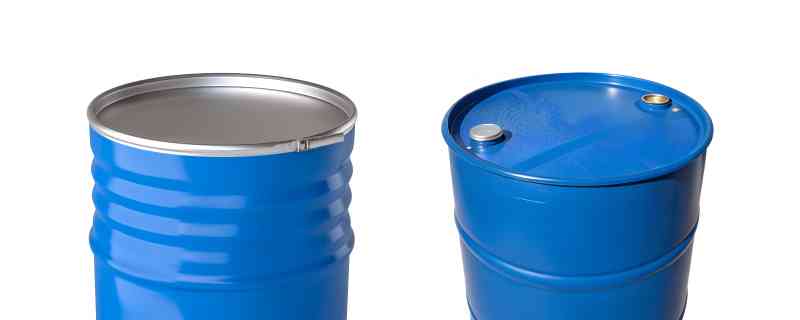Where Can I Buy 55-Gallon Steel Drums?
A practical buyer’s guide to sourcing new and used 55-gallon steel barrels

Key Takeaways
- Where to buy: Go through manufacturers (new), industrial distributors (new & used), or local container yards (used)—pick based on volume, lead time, and price.
- What to choose: Decide new vs. used by your cleanliness/compliance needs (food/hazmat → new or verified UN-rated; budget/industrial waste → used).
- What to verify before purchase: Confirm head type, UN mark for hazmat, lining, and condition—then factor freight/pallet counts.
Quick Answer: Main Buying Channels
Before you start requesting quotes, know your options; after you review, pick the channel that fits your volume, lead time, and spec control.
- Manufacturers (OEMs)
- New drums, consistent specs, lining options, UN/DOT configurations.
- Best for regulated liquids and repeat orders; watch MOQs and lead times.
- Industrial Distributors
- Blend of brands and specs, fast availability, accessories in stock.
- Ideal for quick fulfillment or mixed-site deliveries; verify exact ratings per lot.
- Regional Container Yards / Local Suppliers
- Local pickup, budget-friendly used inventory, flexible quantities.
- Inspect for prior contents, rust, dents, and complete closure hardware.

Wrap up by shortlisting 1–2 channels that balance freight, speed, and the spec control you need.
New vs Used: Which Should You Buy?
Use this quick framework to decide; then confirm with sample photos and a spec sheet before purchase.
- Buy New when you need:
- Cleanliness and predictable specs (gauge, lining, closures).
- Food or potable applications (new epoxy-phenolic lined or stainless).
- Hazmat shipping—order UN-rated and check the actual drum marking.
- Buy Used when you want:
- Significant cost savings for non-sensitive contents.
- Drums for in-plant collection, waste streams, or non-regulated transport.
- Flexibility on cosmetics (scuffs, paint, labeling) if structure is sound.

Close the decision by confirming head type (open vs tight), lining needs, and whether UN compliance is required.
Pre-Buy Verification Checklist
Run through this list before issuing a PO; once done, save it as your standard.
- Head Type: Open-head (1A2) for solids/viscous; tight-head (1A1) for liquids.
- UN/DOT Mark (if hazmat): Validate the full UN code on the drum (type, X/Y/Z level, test pressure or mass, year).
- Material & Lining: Carbon steel standard; epoxy-phenolic for many chemicals/food; stainless for high purity/corrosion resistance.
- Gauge / Thickness: Commonly ~1.2 mm ends and ~0.9 mm body on general-purpose drums; heavier gauges add durability.
- Condition (Used): Prior contents declared, interiors clean, closures intact, no deep rust or buckled chimes.
- Closures & Accessories: Bolt/lever ring (open-head), 2" & ¾" bungs (tight-head), correct gaskets and cap-seals.

Finish by filing vendor proofs (photos, markings, spec sheet) with the PO.
Simple Spec Snapshot
| Attribute | Typical Value / Options | Notes / Buyer Tips |
|---|---|---|
| Head Type | Open-head (1A2); Tight-head (1A1) | Open-head for solids/viscous; tight-head for pourable liquids and better leak control. |
| Exterior Size (approx.) | ~23" diameter × ~34.5" height | Dimensions vary slightly by maker; confirm for pallet fit and racking. |
| Material | Carbon steel (standard); Stainless steel (optional) | Stainless for high purity/corrosion resistance; costs more. |
| Interior | Unlined (rust inhibitor) or epoxy-phenolic lined | Lined is typical for chemicals/food; unlined is not food-grade. |
| Tight-Head Fittings | 2" NPT & ¾" bungs | Check thread, gasket material, and cap-seals for compliance. |
| Closure (Open-head) | Bolt ring or lever-lock ring | Bolt ring = tool-tightened; lever-lock = faster handling. |
| UN/DOT Rating (if needed) | Available—verify stamped UN code on each drum | Don’t assume “new” means UN-rated; confirm X/Y/Z rating matches your packing group. |
| Typical Gauge (general) | Ends ~1.2 mm (≈18 ga); Body ~0.9 mm (≈20 ga) | Heavier gauges improve durability and may be required by certain ratings/specs. |
Where to Look (Practical Sourcing Ideas)
Start broad, then narrow; after you compare, lock in a primary and a backup supplier.
- Direct from Manufacturers: Best spec control, custom linings, branding.
- Specialty Distributors: Speed and accessory availability.
- Local Suppliers / Yards: Lower freight, quick pickup for used drums.

Conclude sourcing by mapping freight lanes and pallet counts for your sites.
Red Flags to Avoid
Scan for these issues; if any appear, pause and re-spec.
- Unknown prior contents on used drums.
- Missing/mismatched lids, rings, bungs, or gaskets.
- “UN-rated” claims without a valid UN mark on the drum.
- “Food-grade” claims on used drums—rarely appropriate.

If a red flag surfaces, request replacements or switch vendors.
Conclusion
Buying 55-gallon steel drums is straightforward when you align channel, spec, and verification. Decide new vs used, match head type and lining to your product, and confirm the UN mark when compliance matters. A short, repeatable checklist will keep your buys clean, compliant, and on budget.

